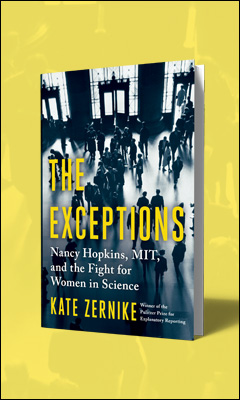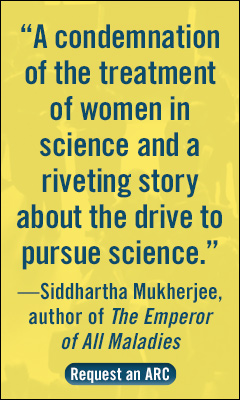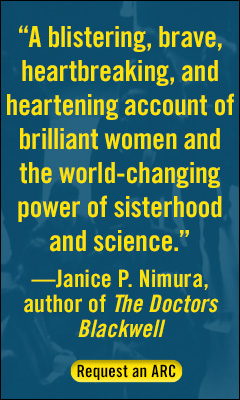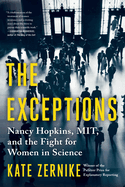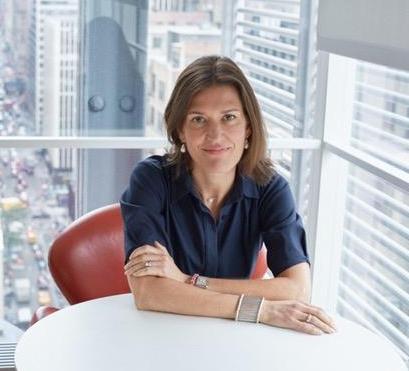The Exceptions: Nancy Hopkins, MIT, and the Fight for Women in Science
by Kate Zernike
In The Exceptions: Nancy Hopkins, MIT, and the Fight for Women in Science, Pulitzer Prize-winning journalist Kate Zernike expands on her March 1999 article about MIT's long history of undervaluing its female faculty in this in-depth, revelatory, enraging and ultimately triumphant account of a group of women who brought to light the insidious ways in which bias undermined their careers in science.
Zernike's front-page story in the Boston Sunday Globe revealed that MIT had admitted to long-term discrimination against women on its science faculty. This led to "a climate change in the whole of academia," as an astronomer at the California Institute of Technology called it. Surprisingly, in litigious America, that admission was not the result of a lawsuit, but because 16 women, "who had started as strangers, working in secret, and gathered their case so methodically--like the scientists they were--that MIT could not ignore them. They upset the usual assumptions about why there were so few women in science and math and unleashed a reckoning across the United States."
Leading the charge was Nancy Hopkins, a molecular biologist who was trying to identify the genes essential for development. Her defining moment came when she needed more room for her zebrafish tanks. Her request was denied, but she discovered other researchers had more space than she did--male researchers. So Nancy painstakingly measured every square inch of the laboratories in her building, bringing hard data to the dean that on average the male faculty had much more lab space than their female counterparts.
Zernike takes readers with Hopkins on her journey to this moment, with all its frustrations, at a time when "unconscious bias" was not yet in common parlance.
Hopkins granted Zernike access to the papers she'd kept during this time, and the result is an intimate look at her life and career. Hopkins was a junior at Radcliffe in the 1960s when she took a class from James D. Watson, already famous for helping to discover the DNA double helix. She was entranced by his ideas, and soon asked if she could work in his lab. "The lab had opened up a world she had not known existed, much less thought she might inhabit." She found both purpose and camaraderie in doing actual science, and initially decided against a Ph.D. "She didn't think about this as a case of limited options. She saw it as reality," since academic women's experiences were mostly short-term research gigs or lab work while serving as their husbands' adjuncts. Employers considered them uncommitted to their jobs; others considered them uncommitted to their children.
Hopkins later decided to get a Ph.D. at Harvard, worked as a postdoc fellow for Watson, and joined the MIT faculty in the Center for Cancer Research as an assistant professor in 1973. Along the way, she endured subtle forms of discrimination: offered an undergraduate genetics course, her department chairman nixed the idea, saying that the students wouldn't trust scientific information from a woman; she was left out of important meetings; she wasn't told about grants. Yet she dismissed others' stories of discrimination--they were "difficult" women, she wasn't. "The old rules and assumptions did not apply anymore, or, at least, they would not apply to Nancy. Of that she felt confident."
But doubts began creeping into her thinking, particularly after she read Rosalind Franklin & DNA. Franklin's X-ray of a double helix had helped Watson and Crick prove their DNA theory, but she was denied her due. "Reading the book now, [Nancy] thought, This is my life." Then came the fateful epiphany with the measuring tape: "She felt like a fool, duped.... It had taken her twenty years to see it... [and] now that she did, it was as obvious as the clearest scientific result." So she talked to other women at MIT; she gathered evidence. Zernike recounts a pivotal lunch between Hopkins and geneticist and cell biologist Mary-Lou Pardue that turned the tide.
The author smoothly paints a picture of the attitudes of the day, re-creating a context in which Hopkins feared she would appear "too radical" to her female colleagues. But the patterns were irrefutable. She, along with 15 other women, wrote a proposal for a women's committee that would examine how resources and teaching assignments were distributed. After the letter was delivered, six of them met with the dean. As they moved across campus, one can envision gunslingers walking down a dusty street, then steps echoing in a marble hallway. When the dean walked into the meeting, he hadn't even read their letter. But they had started something that, in retrospect, seems inevitable, culminating with MIT's admission and a radical change in research universities' treatment of women scientists, faculty and students.
In Zernike's hands, this is a thrilling story: we know the outcome, but the ride is both frustrating--how could Hopkins put up with this for so long?--and then exhilarating when she becomes radical in her fight for equality.
The women at MIT nailed the issue of marginalization, of unconscious bias in the sciences. And while Hopkins's story plays out, Zernike drops in fascinating, relevant history: DNA research, genetics, mini-bios of chemist Rosalind Franklin and geneticist Barbara McClintock, affirmative action and the civil rights era. She has a deft touch with detail: Hopkins's sister Ann divided Harvard men by white socks or dark; Hopkins describes a first classroom encounter: "Watson appeared suddenly, as if by a tailwind in a cartoon."
Zernike writes, "Nancy's tape measure had given women a new way to quantify a feeling they hadn't quite known how to explain, a measure of all the indignities that added up over time. "
Her now-famous tape measure is in the MIT Museum. --Marilyn Dahl



